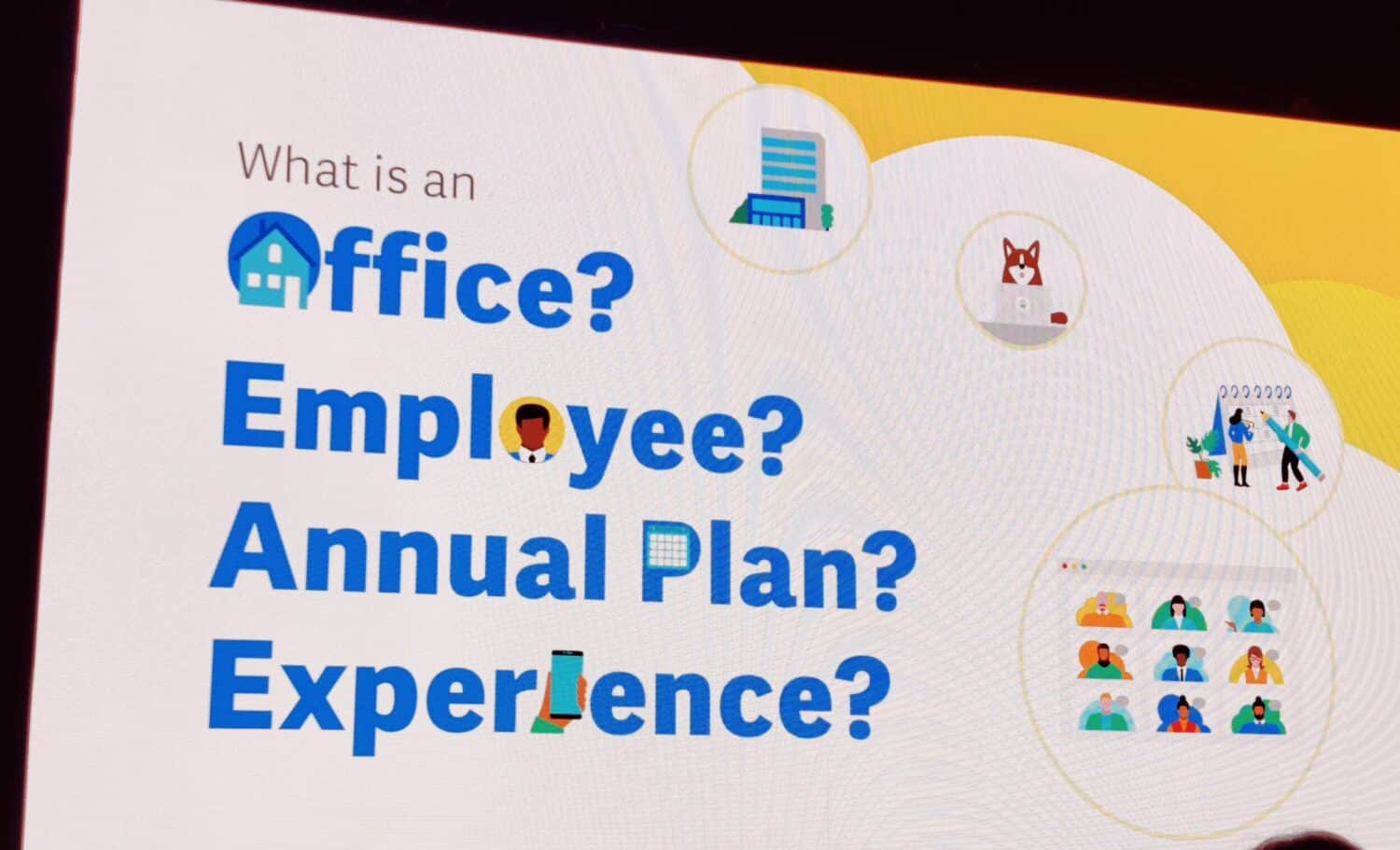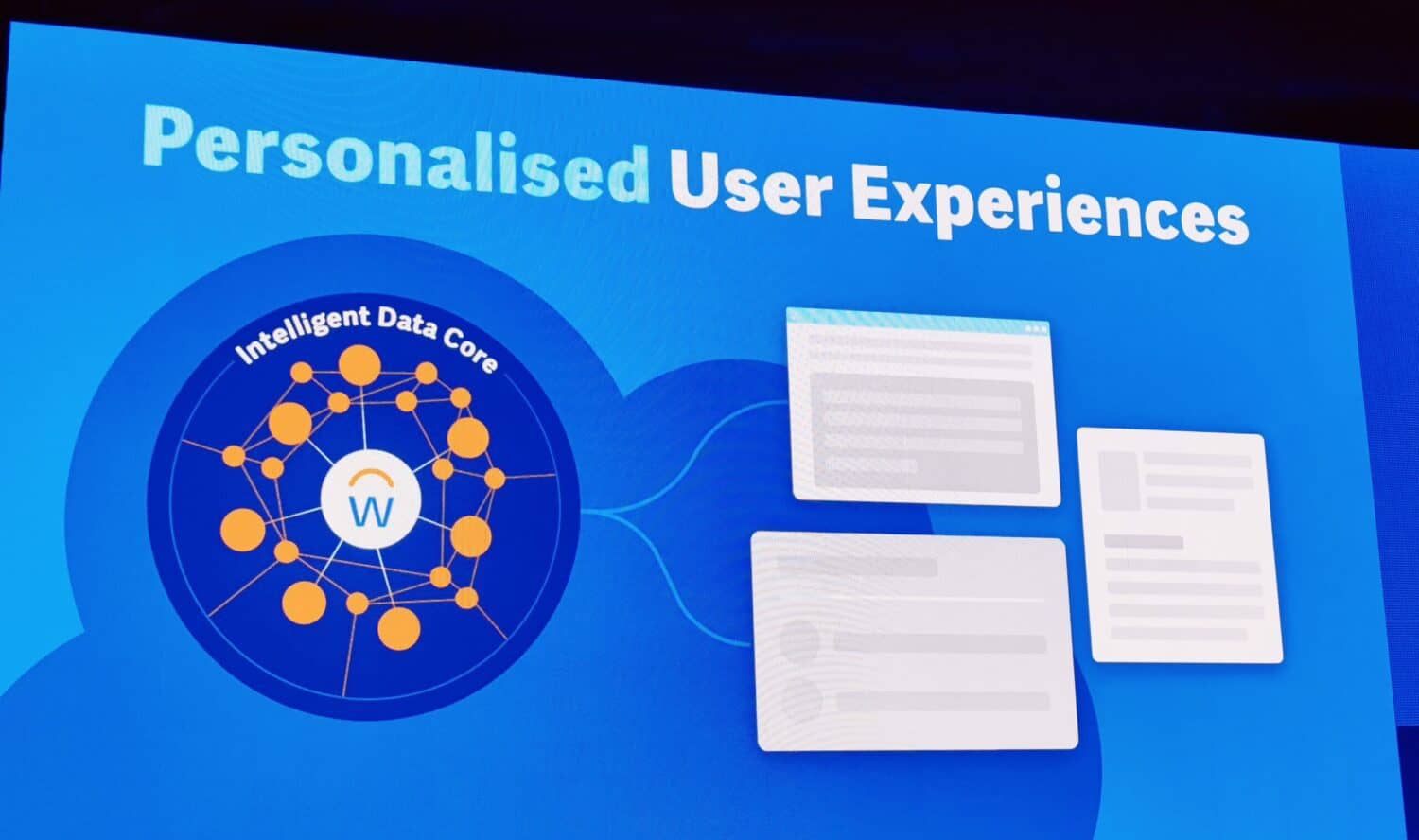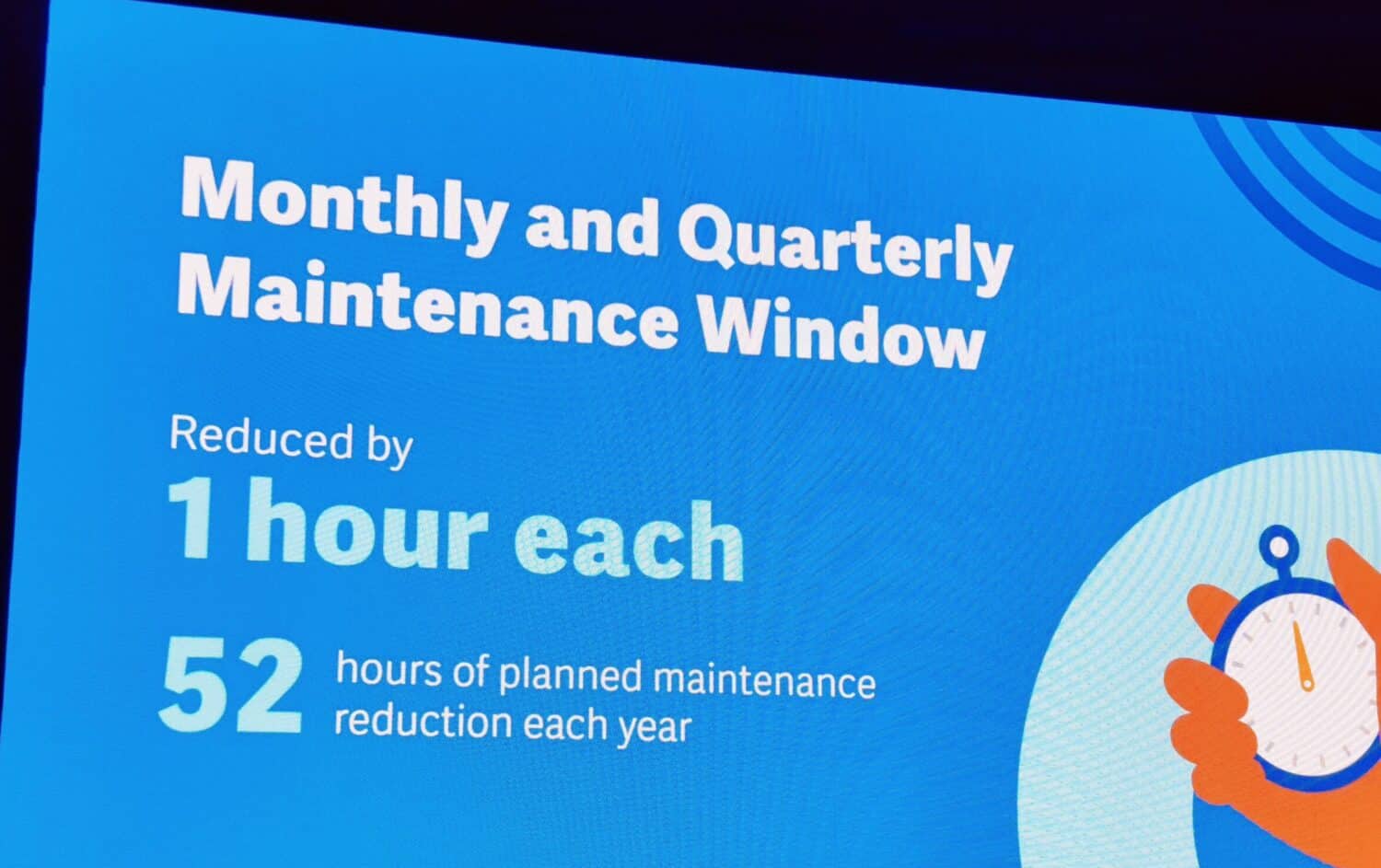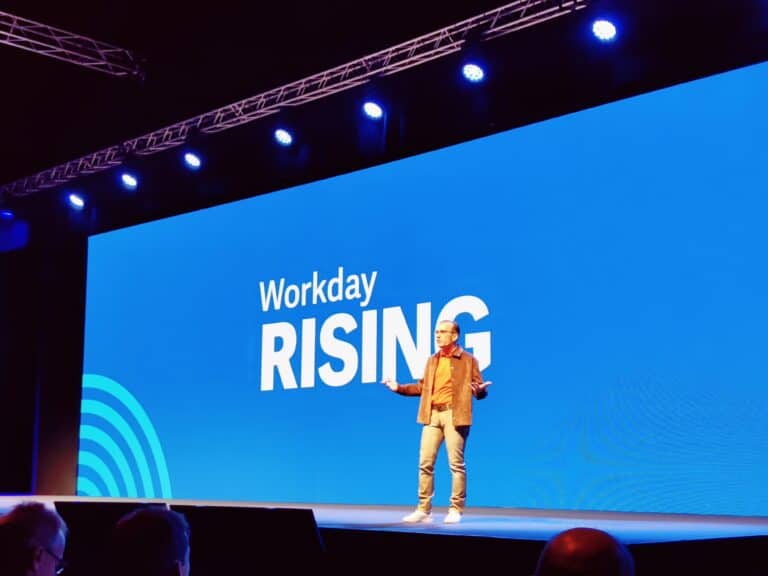The seventh edition of Workday Rising has begun. Co-ceo Chano Fernandez kicked off the event with an opening keynote. For many Workday employees, it is also their first Workday Rising. Partly because of the acquisitions Workday has made but also the growth the organization is experiencing. So Fernandez welcomes the former employees of Peakon, Scout and VNDLY, as well as the 3,500 Workday Rising participants.
Fernandez states that this week is about celebrating the positive changes in your organization in recent years. It is also about laying the foundation for the upcoming changes and further digitalization in your organization. Fernandez concludes that it is important to show who you are and what you stand for as an organization. Happy employees make happy customers.
“Happy employees make happy customers.”
Workday now has 9500 customers, including 50% of the Fortune 500. Furthermore, the organization has an NPS score of 95+ for 13 years in a row. The organization has experienced a growth spurt in the last few years with some 5,000 new employees. Workday now totals 16,900 employees of which 3,600 are in Europe. EMEA is currently the most important growth market for Workday.
Workday portfolio
Fernandez also points to Workday’s pillars when looking at product development. Workday wants to develop native cloud solutions that are people-centric. The solutions Workday offers must also provide an excellent customer experience, like a good consumer product.

What is an office? What is an employee? What is an annual plan? What is an experience? These are all questions that Workday puts into its keynote. Simply because those questions no longer have a single answer. Much has changed in recent years, innovation is happening faster than ever. The way we work and how we work has also changed completely.
SaaS is the new standard and Workday has fully caught on to that, even before SaaS was a buzzword. The Workday platform has been given the name Enterprise Management Cloud, but that is more to satisfy the buzzword trend. Similarly, there would be an HR cloud and Finance cloud, but these too are more buzzwords.
Workday’s products are still the same, the main solutions being Workday Financial Management and Workday Human Capital Management.
Workday solutions use the same core components
What they have thought carefully about at Workday is that, as much as possible, the products use the same core and work with the same data model. Workday calls this the Intelligent Data Core. This makes it easy to combine data from employees or customers, including external sources, and provide a personalized experience. Workday’s focus in the development of its products is not only on expanding and improving, but also making sure the various solutions work well together.

The Workday portfolio now consists of a complete suite with quite a few different solutions. The suite has some major solutions where the main focus is on; Workday Human Capital Management, Workday Financial Management, Workday Adaptive Planning, Workday Peakon Employee Voice and Workday Strategic Sourcing.
In addition, Workday has quite a few solutions that allow you to expand the suite even further. Analytics and Reporting, Payroll and Workforce Management, Spend Management, Talent Management, Professional Services Automation and Workday Student to name a few.
Finally, there is Workday Extend, a solution that allows you to extend Workday’s products with custom functionality for your organization. Workday Extend has been available since 2020. It allows them to develop applications in a low-code way using App Builder and the Workday Graph API. By now there are already over 750 applications, and they see the adoption of Extend increasing among customers.
The big advantage of Extend is that the Workday solutions can better address the unique requirements of organizations. Some companies do their HR a little differently than others.
Workday Today
Last month, Workday Today was presented. A new portal designed to significantly improve the user experience for employees. The experience can always be better, according to Workday. As an employee, you need to have an overview and be able to perform actions quickly. You don’t want to send emails to ask for a day off or find certain HR policies. With the new portal, you will no longer miss important dates and appointments, and you can easily manage days off, claim expenses quickly, as well as find HR policies. Through natural language processing, you can quickly make complete HR policies searchable, so employees can ask questions and get answers with a simple search or chatbot interaction. Workday Today is a new portal, but in recent years Workday has already tapped into other platforms. Through an iPhone and Android app, as well as integrations within Slack and Microsoft Teams. So Workday can be integrated into your organization in many different ways.
Customers can choose which portal or integrations works the best for their organization. Submitting expense reports and requesting vacation days is the most commonly shown example. However, through its mobile apps and machine learning, Workday has also developed applications for employees and HR teams. For example, automatically clocking in and out based on your location. Or automatically calculating headcounts of teams.
Optimizing Workday availability
Workday has embraced the major cloud platforms as partners. The Workday platform can be offered from different regions and clouds. Workday’s cloud solutions are running primarily on Amazon Web Services or the Workday datacenters in Europa or the US. However, Workday also uses Google Cloud for its AI solutions.

Workday’s software also needs to be maintained. On average, Workday had about 4 hours per week of maintenance during which the cloud solutions were unavailable. That has now been reduced to 3 hours per week. A savings of 52 maintenance hours per week.
More empathy for employees
Another important part of the keynote was about Peakon, which has now been renamed Workday Peakon Employee Voice. Within this platform, employees can anonymously share what’s on their minds. Managers, in turn, can see what is going on with their employees. Based on that, they can create policies that respond to employees’ feelings and desires. It is a way for managers to better manage their employees or as Workday states; “show more empathy.” An example Workday showed is employees complaining about the number of meetings they have. However, one can also complain about work processes, work hours, software solutions or the equipment they have to work with.
If several people complain about the amount of work and the number of meetings, it might be wise, for example, to schedule meeting-free days. Days or parts of the day when meetings are not allowed to be scheduled, during those hours employees can get their work done.
Workday Suite primarily focuses on employees
During Workday Rising, innovations toward the employee play the biggest role. That is where the biggest innovation focus lies during the keynote. Extending the platform through low-code by customers and indepedent software vendors also gets a lot of attention.
